Rural Visionaries: Tales of Creativity in Britain's Country Houses
Pursuing The Past gives us rare insight into the creative past of three of Britain's most fascinating historic countryside homes
Rural Visionaries: Tales of Creativity in Britain's Country Houses
by Kelly Morrison, Pursuing The Past
Today we welcome our first article from Pursing The Past - one of our Partners. Pursuing the Past is an historical research agency creating professionally researched, beautifully designed and compellingly written histories of period properties and the people who lived in them. They'll be gracing Storia once a month with their fascinating insights into research and historic locations across the UK.
Britain's Country Houses
Within the quiet corners of Britain's countryside, creativity has always found its home. At Pursuing the Past, we've uncovered countless stories of artistic innovation while researching Britain's historic rural properties. From gardens that dance with seasonal beauty to rooms that have housed opera's finest minds, these houses reveal how creative spirits transformed their residences into sanctuaries of excellence. Each property illustrates the extraordinary vision of individuals who saw their homes not merely as dwellings, but as expressions of their craft.
Throughout history, Britain's country houses have served as creative crucibles, fostering innovation in art, music, literature, and design. These properties became vital hubs of cultural exchange, where artists, writers, and innovators found the space and inspiration to pursue their crafts away from urban constraints.
Here, we'll explore three remarkable examples: Brook House, where horticultural artistry flourished under the Milne family's careful cultivation; Winsbury House, where Eleanor Keays transformed a Georgian residence into an artist's sanctuary; and Spring House, where Eric Crozier's passion for opera found its perfect stage.
Nature's Canvas: Brook House
In the picturesque village of Colwall, nestled on the western slopes of the Malvern Hills, stands Brook House. This Grade-II listed property, surrounded by the dramatic backdrop of the Herefordshire Beacon and the ancient Iron Age British Camp, sits in a landscape that has drawn settlers and artists since medieval times.
James and Isabel Milne's vision for Brook House was comprehensive and evolving. From their arrival before 1939, they began thoughtfully developing both the buildings and gardens. By 1950, they were adapting the property's agricultural buildings, and through the 1950s and early '60s, they continued to enhance the estate. James's personal touch was evident in every detail, down to his hand-drawn illustrations for new features like the pillars and swing gate by the stream.
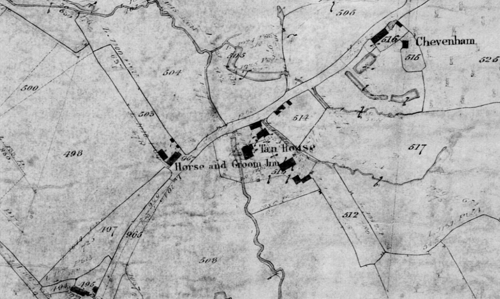
But it was the gardens that truly captured public imagination. Five acres of water gardens stretched across the landscape, complemented by a walled garden and flowering trees and shrubs, all harmoniously arranged around the mill stream that gave the house its name. By 1977, these gardens had achieved such renown that they were opened to the public, becoming a beloved destination for garden enthusiasts across Britain.
The Milnes' horticultural expertise was internationally recognised - so much so that Brook House earned the prestigious honour of being featured on the cover of the 'Gardens to Visit' book. Their open days became significant local events, with a single afternoon in June 1980 raising a record £700 for charity. Visitors would delight in the carefully planned landscapes, purchase plants, and enjoy afternoon tea while exploring what the Sandwell Evening Mail described as ‘one of Britain's top book-cover gardens.’
After more than 45 years of nurturing their botanical masterpiece, James and Isabel's work continued through their son, James Nicol Milne, who maintained the tradition of sharing these internationally renowned gardens with the public well into the 1990s. Today, Brook House demonstrates how dedication to craft - in this case, the art of garden design - can create an enduring gift that enriches not just a property, but an entire community.
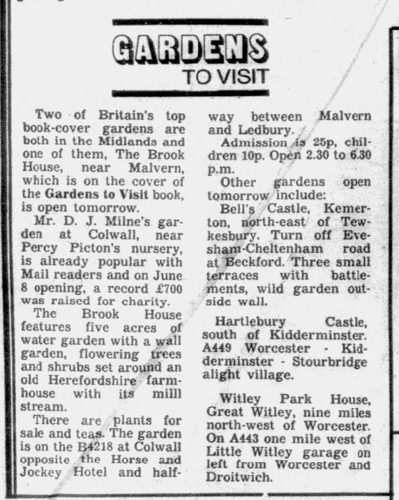
An Artist’s Sanctuary: Winsbury House
In the tranquil village of Marksbury, Somerset, where ancient paths wind through the eastern edge of Chew Valley, Winsbury House holds a rich artistic heritage. This Grade-II listed property, dating from 1781, has drawn creative spirits throughout its history, first as a rectory and later as a private residence.
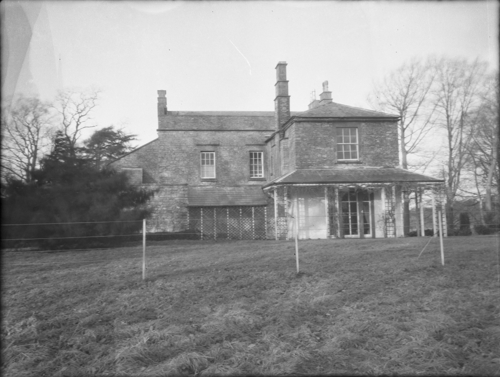
In the early nineteenth century, the house was home to the artistically inclined Seymour family. Among them, Jane Seymour, who later became Baroness Coleridge of Ottery St Mary, distinguished herself as an accomplished artist. Her sister Harriette also pursued artistic endeavours, with her works now preserved in the Carnegie Museum of Art. These creative foundations would set the tone for the property's future as an artistic haven.
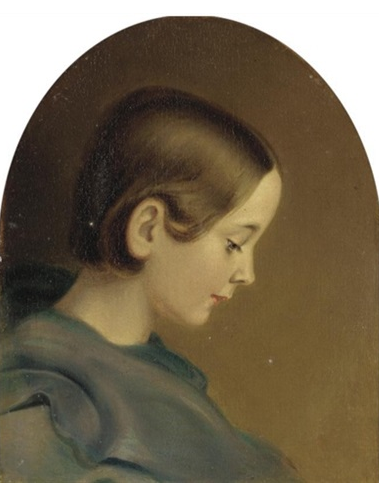
It was in 1947 that another remarkable artist would make Winsbury House her home. Eleanor Mary Taylor Keays, who trained at the prestigious Slade School of Fine Art, transformed the property into both a family home and artist's sanctuary. The property's elegant proportions and historic character provided the perfect backdrop for her creative pursuits. Her paintings, which adorned the walls of Winsbury House, captured the essence of both domestic life and artistic expression.
While Eleanor dedicated much of her life to raising her five children, her artistic spirit never dimmed. The house itself seemed to reflect her creative sensibilities, with its distinctive tripartite French doors and period features serving as a fitting frame for her work. Even the home's steadfast resistance to modernisation (the Colonel famously refused to install central heating to preserve the building's integrity) spoke to a deep appreciation for authenticity that influenced Eleanor's artistic perspective.
Until her passing in 1981 at the age of 73, Eleanor's presence imbued Winsbury House with a special kind of creativity - one that balanced artistic pursuit with family life. Her story lives on not only in the paintings that once graced the walls of this historic home but in the memories of a woman who found her artistic voice within these centuries-old walls.
An Opera Director’s Haven: Spring House
In the heart of Hildenborough in the Kent countryside, Spring House stands as a beacon of creative inspiration. While its story begins in the late fifteenth century, it was during the 1960s that this Grade II-listed property became a sanctuary for one of Britain's most distinguished figures in opera - Eric Crozier OBE, whose presence would add another fascinating chapter to the house's already rich narrative.
The property itself seems designed for artistic contemplation, with its exposed ceiling beams and joists, and particularly remarkable late medieval standard rafter roof. These architectural features, shaped by various hands since the Tudor period, created the perfect backdrop for Crozier's creative endeavours. As a theatrical director, producer, and writer, Crozier had already made his mark on British opera, notably through his collaboration with William Walton and his significant contribution to 'Peter Grimes'.
By 1963, Spring House had become more than just a home - it transformed into a hub of creative collaboration. A particularly fruitful partnership emerged between Crozier and the talented 21-year-old Erica Macfadyen, daughter of Sir Eric Macfadyen and a student at the prestigious Slade School of Art. Their artistic connection began charmingly with a Christmas card collaboration, but soon evolved into a more significant partnership, with Macfadyen providing illustrations for Crozier's books about opera.
Spring House itself became a subject of artistic interpretation when Crozier commissioned Macfadyen to capture its essence in a drawing for a card. This moment perfectly encapsulates how the property continued to inspire creativity, becoming both muse and sanctuary for its artistic occupant. Crozier's dedication to his craft was evident in his commitment to research - even attending Tunbridge Wells Technical College to learn German for his frequent research trips to Vienna while working on his book about Beethoven's 'Fidelio'.
These three properties, each unique in their creative heritage, remind us that country houses were never merely static monuments to the past. As house historians, we've discovered that these spaces consistently fostered innovation, from the Victorian era's amateur scientists to today's artists-in-residence programs. Through our research, we've uncovered how passion and artistic vision can transform bricks and mortar into lasting legacies of creative excellence.
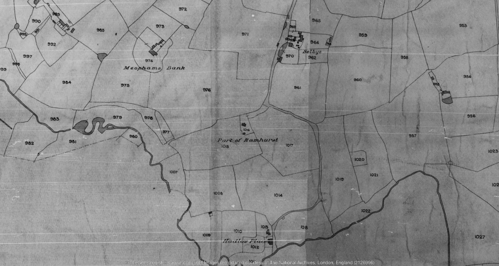
In each case, these homes provided not just shelter, but inspiration - proving that the right environment can nurture creativity across generations. Today, they stand as enduring symbols of the remarkable relationship between historic properties and the creative spirits who have called them home. As we continue to uncover and preserve these stories, we're reminded that every house holds the potential to inspire future generations of visionaries.
Submit to Storia
Submit your story using the form below. We will review your submission and notify you within two weeks if your submission has been accepted. We may ask for some additional information.
If your story is accepted, we will contact you with a publication date.
Submit your story